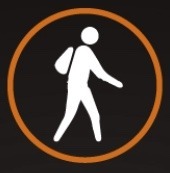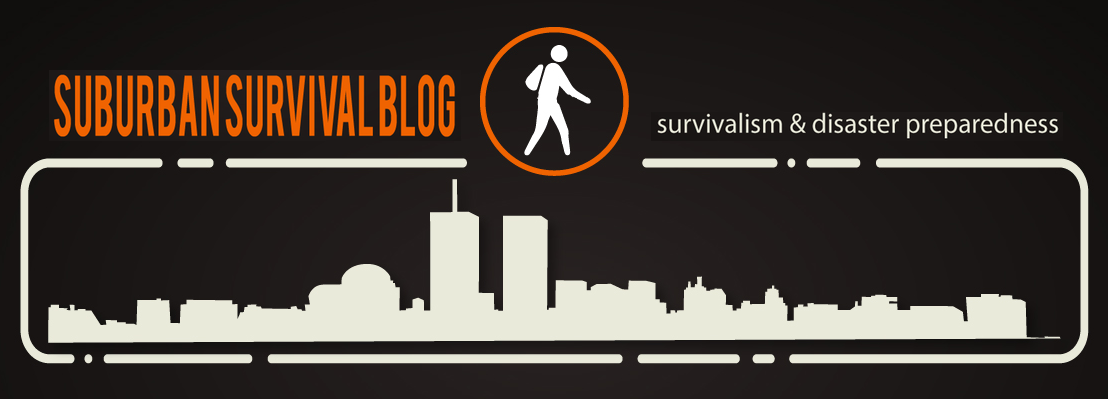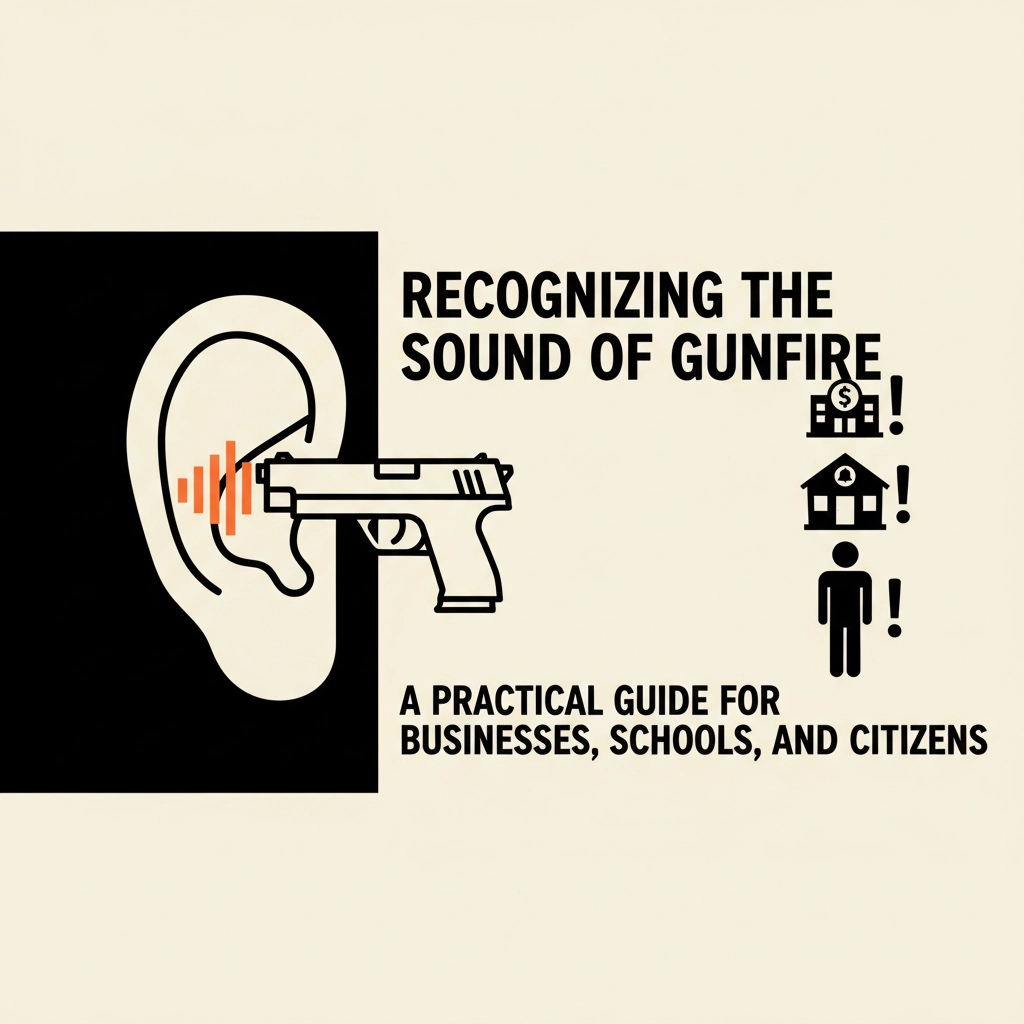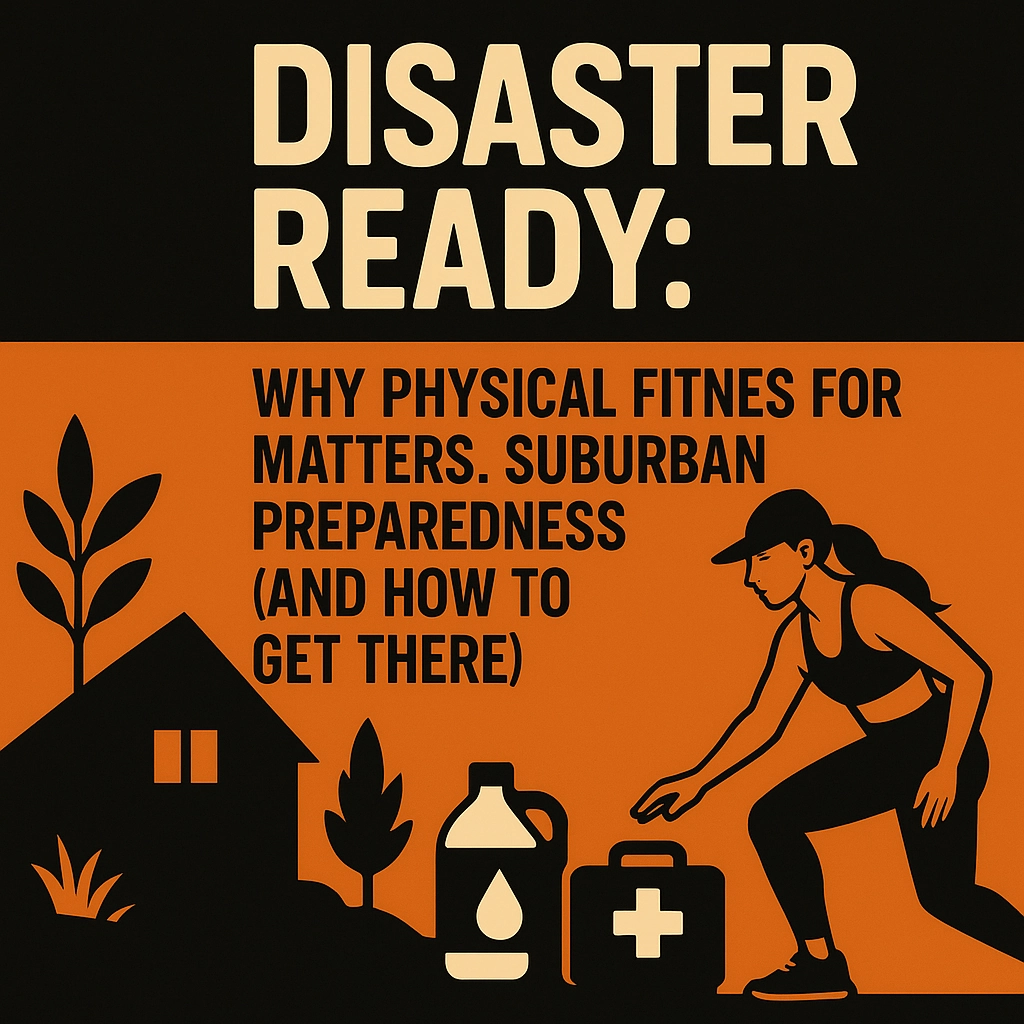A Response to Recent UK Government Advice and Media Coverage
This blog post is written as a direct response to a recent article published by the Daily Mail, titled “Brits told to prepare 72-hour survival kits amid growing threats from Putin,” which highlights the UK government’s call for citizens to prepare for emergencies lasting up to three days. You can read the full article here: https://www.dailymail.co.uk/news/article-14575537/Brits-prepare-72-hour-survival-kit-Putin.html.
While the government’s guidance is a positive first step, we believe it’s critical to go further, especially given the complex and evolving threats we now face. In the sections that follow, we’ll explain why 72 hours simply isn’t enough and how households across the UK can start planning for two weeks, one month, or even longer. This isn’t about fear; it’s about practical, level-headed preparedness. Let’s begin.
Is 72 Hours Really Enough?
In a world that’s changing faster than ever, the idea of being prepared has taken on a whole new meaning. Recently, the UK government suggested that everyone should have a 72-hour emergency kit ready at home. This includes basic supplies like bottled water, canned food, batteries, flashlights, and a first aid kit; enough to last for three days during a crisis. While this is a helpful starting point, we need to ask an important question: Is 72 hours really enough?
For decades, emergency planners have used the 72-hour model as a rule of thumb. It’s based on the idea that within three days, help will arrive, systems will be restored, and life will begin returning to normal. But as recent world events have shown us, disasters, especially ones with political roots, don’t always follow a clean schedule. We’ve seen entire cities shut down, power grids knocked offline for weeks, and shelves at supermarkets left empty for far longer than three days.
Why the UK Government Is Urging People to Prepare
The recent push for households in Britain to build 72-hour kits isn’t random; it’s rooted in growing concerns over national security. Government officials and intelligence agencies have warned of possible threats from hostile nations, particularly Russia. Experts fear attacks on the UK’s energy infrastructure, including power plants, communication networks, and fuel pipelines. If these systems are disrupted, it could take much longer than three days for emergency services and government aid to reach everyone in need.
What we’re facing isn’t just bad weather or temporary outages; it’s a new era of risk. Modern threats include cyberattacks, sabotage, economic pressure, and even misinformation campaigns. These dangers can build slowly and hit hard, causing long-lasting disruption to daily life. Being prepared for only three days may not give you enough time or supplies to protect your family if the crisis stretches on.
Why We Need to Think Bigger… Two Weeks to Three Months…
This is where the conversation needs to shift. A 72-hour kit is great for short-term problems like a power cut or a snowstorm. But what if you lose access to clean water for a week? Or can’t buy groceries for a month because deliveries have stopped? What if the power doesn’t come back on for two weeks, and gas stations stay closed?
Planning for just three days could leave you vulnerable when real emergencies strike. Instead, it’s smarter and safer to aim for at least two weeks of self-reliance, with long-term goals stretching to one or even three months. That doesn’t mean panic-buying or hoarding. It means thoughtful planning, building up supplies over time, and understanding how to stay safe and comfortable when systems fail.
In this blog, we’ll explore why extended preparedness matters more than ever, what the threats look like today, and how you can take simple steps to protect yourself and your family. Let’s go beyond the basics and prepare for what’s truly possible.
What Is a 72-Hour Kit and Why Is It the Starting Point?
What the Government Recommends
The UK government has started advising families to put together a “72-hour emergency kit.” This means gathering the basics you might need if there’s a power outage, flooding, or some kind of disruption to daily life. They suggest having bottled water, canned or ready-to-eat food, a flashlight, batteries, a first aid kit, and items like wet wipes, blankets, and a radio.
The idea is simple: if something bad happens, you’ll have what you need to take care of yourself for three days. That’s usually the time it takes for emergency services to respond or for basic services to come back online. It’s a good first step, but it’s really just that: a first step.
Why 72 Hours Is the Bare Minimum
While the 72-hour kit sounds smart, it only covers very short-term problems. It assumes that everything will be okay again within three days. But as we’ve seen in recent years, that’s not always the case. Supply chains can break down, fuel stations can run dry, and power can stay off for a lot longer than we’d like.
Imagine trying to feed your family, stay warm, or find clean water after day four, when the kit runs out. That’s when things get much harder. The truth is, many emergencies don’t follow a tight schedule. When major events happen, it often takes a lot longer to fix everything.
What Happens After 72 Hours?
After three days, most people will start running low on food, clean water, and power. If shops are closed, ATMs don’t work, and public services are overwhelmed, the pressure builds quickly. The stress and panic can grow just as fast as the need for more supplies.
This is where deeper preparedness becomes critical. Instead of thinking, “How do I survive for three days?” we should be asking, “How can I make sure my family is safe and okay for weeks or more if help takes longer?” The good news is, with a bit of planning, it’s totally possible.
Start Small, Think Big
Nobody has to go from zero to survival expert overnight. The 72-hour kit is still a useful building block; it gives you a chance to think through the basics. But instead of stopping there, use it as a launching pad. The next step is stretching that plan out to two weeks, then a month, and eventually longer if you’re able.
We’ll explore exactly how to do that in the coming sections. But first, let’s take a closer look at why the world is pushing us to think more seriously about preparedness in the first place. The threats aren’t just theoretical anymore, they’re knocking on our door.
A Changing World… Why 72 Hours No Longer Cuts It
The Russian Threat Is Real
In recent months, UK officials have raised serious concerns about possible threats coming from Russia. Intelligence sources warn that Russia may target key parts of British infrastructure, things as power grids, undersea internet cables, and energy pipelines. These aren’t just scary headlines. If an attack like this happened, it could cut off electricity, fuel, and even communication for millions of people.
This kind of threat isn’t science fiction, it’s already happening in other parts of the world. And if it happens here, fixing the damage could take far longer than three days. That’s why relying on a 72-hour kit just doesn’t make sense anymore. The risks are bigger, more complex, and could leave people without support for weeks, not just days.
Hybrid Warfare: A Modern Kind of Danger
What we’re seeing now is a new type of conflict called “hybrid warfare.” It’s not just tanks and missiles. It’s cyberattacks, sabotage, and pressure on things that affect daily life, like food deliveries, electricity, and public transportation. These quiet, behind-the-scenes attacks are meant to create chaos and confusion without ever firing a shot.
When you flip a light switch and nothing happens, or when your phone stops working, it might not be just a technical glitch. It could be part of a larger attack meant to weaken the country and make people feel helpless. The problem is, hybrid warfare can take a long time to recover from, and three days of supplies won’t get most families very far.
Disruption Could Come Without Warning
Another big issue is that these threats don’t always come with a warning. You might wake up one morning to find the internet down, no mobile service, and stores closing early because they can’t process payments. By then, it’s too late to “run to the shop” for supplies; everyone else will be doing the same thing.
This is why it’s smart to think ahead. You don’t want to be in a situation where your family is hungry, cold, or cut off just because you assumed everything would be fixed in three days. In this new world, being ready for longer disruptions isn’t extreme, it’s practical.
The Risks Have Grown
The world has changed, and so has the way threats affect our daily lives. It’s no longer just about floods or snowstorms; it’s about targeted attacks on the systems we depend on the most. The risk of long-term disruption is real and growing.
A 72-hour kit is still useful, but it’s not enough. Today’s threats demand a longer-term mindset. If the government is warning us about these risks, we owe it to ourselves and our families to listen and prepare for more than just three days.
What We Can Learn from Recent Crises
The COVID-19 Pandemic Changed Everything
When the COVID-19 pandemic hit, life didn’t just slow down; it stopped. Supermarket shelves were empty, cleaning supplies vanished, and people waited in long lines just to buy basic food. Delivery drivers were overwhelmed, and even online stores couldn’t keep up. This wasn’t a three-day event. The shortages, stress, and uncertainty lasted for months.
If that experience taught us anything, it’s how quickly normal life can break down. It showed us how fragile the supply chain really is. And it proved that relying on “just-in-time” shopping doesn’t work when everyone is scrambling at the same time.
Weather Disasters Don’t Stick to a Schedule
Severe storms, floods, heat waves, and blizzards are happening more often and lasting longer. Across the UK and Europe, we’ve seen towns cut off for a week or more due to flooding. Roads washed out, power knocked offline, and water supplies polluted. In those situations, emergency crews do their best, but they can’t reach everyone right away.
A 72-hour kit might get you through the first few days, but after that, things get tough. Without clean water, safe food, or heat, you’re stuck waiting and hoping someone can reach you. That’s why preparing for two weeks or more is just smart planning, especially when we know that extreme weather is becoming more common.
Energy Shortages Aren’t Just a Future Problem
Another big lesson has come from the energy crisis that followed the war in Ukraine. Countries across Europe, including the UK, faced high prices and even warnings about possible blackouts. While widespread blackouts didn’t happen, the risk was real. And if things get worse with Russia or another global power, the chance of energy cuts becomes much higher.
Imagine what happens if your home has no power for a week in the middle of winter. No heat, no hot food, no way to charge your phone. That’s more than just inconvenient; it can be dangerous. This kind of crisis isn’t something from a movie. It’s something experts say could happen if we’re not prepared.
The Message Is Clear: Be Ready for More
The past few years have taught us that emergencies can last far longer than we once believed. We’ve faced health crises, natural disasters, and global supply chain failures, and each one showed how important long-term preparedness really is.
We can’t change what’s already happened, but we can learn from it. And one of the biggest lessons is this: it’s no longer safe to assume help will arrive in just three days. We need to be ready to handle things on our own for a longer stretch. In the next section, we’ll look at what that kind of readiness actually looks like and how you can start building it.
How to Build a Two-Week to Three-Month Preparedness Plan
Start with Food and Water
When building a longer-term emergency plan, food and water should be your top priorities. For water, the rule is at least 2 liters per person per day; more if you’re cooking, cleaning, or it’s hot outside. For a two-week supply, that adds up quickly, but it’s worth having on hand in bottles, jugs, or stored in safe containers.
As for food, think shelf-stable and simple. Canned goods, dried pasta, rice, beans, powdered milk, oats, nut butter, and meal replacement bars are good options. Try to stock foods your family actually likes, and don’t forget things like salt, oil, and spices to make meals more enjoyable. Aim for enough food to last two weeks first, then slowly build up toward a three-month supply as your space and budget allow.
Don’t Forget Medical Supplies and Hygiene
Next, make sure you have extra basic medications and first aid items. This includes pain relievers, cold and flu meds, allergy pills, and any prescription drugs you rely on. You’ll also want a thermometer, antiseptic wipes, bandages, and gloves; just in case someone gets hurt or sick.
Hygiene is also crucial during a longer emergency. Stock up on toilet paper, soap, toothpaste, menstrual products, and baby wipes. Cleanliness helps prevent illness and keeps morale higher when things are tough. These are often the first things to disappear from store shelves during a crisis, so it’s smart to be ahead of the game.
Have a Backup Power and Heat Plan
If the power goes out, how will you stay warm, cook, or keep your phone charged? That’s why it’s smart to invest in backup options. A portable battery pack can charge small devices, while solar-powered chargers work well during the day. If you can, a small solar generator or power bank that can run a mini fridge or heater is worth considering.
For heat, layer your clothing and have warm blankets or sleeping bags on hand. If you live in a colder area, consider a small indoor-safe heater and the fuel it requires, but be sure to follow safety rules. Staying warm without power is a challenge, but it’s manageable with some planning.
Keep Your Communications and Documents Ready
In a longer crisis, being able to communicate is key. A battery-powered or hand-crank radio can help you stay updated if mobile networks go down. It’s also a good idea to write down important phone numbers and contacts in case your phone dies or the internet is down.
Make copies of essential documents like IDs, insurance policies, and medical records. Store them in a waterproof folder or digitally on a USB drive. If you ever need to leave your home or get help, having these ready can make a huge difference.
Build Your Plan Gradually, but as Quickly as You Can
You don’t have to do it all in one day. Start small and build your preparedness kit step by step. Buy a few extra cans of food each time you shop. Add water containers when you can. Slowly work toward that two-week mark, and then expand it as your confidence and resources grow.
Preparedness isn’t about panic; it’s about peace of mind. When you know you can take care of yourself and your family for longer than 72 hours, you feel more in control; no matter what comes your way. Up next, we’ll talk about the role community and mindset play in staying strong during tough times.
Community Support and Mental Strength Matter Too
You’re Not Alone. The Power of Community…
In a long-term emergency, your neighbors might be just as important as your supplies. Building strong relationships with people around you can make a huge difference. When people come together to share resources, check on each other, and solve problems as a team, everyone is safer and stronger.
Think about who lives near you. Are there elderly neighbors who might need help? Do you have friends or family nearby who could work together with you? Having a trusted group gives you backup, support, and peace of mind. Emergencies are hard, but they’re a little easier when you’re not facing them alone.
Have a Communication Plan
Even if you have your gear ready and your pantry stocked, staying in touch with loved ones during a crisis is just as important. That’s why it’s smart to create a simple communication plan. Decide ahead of time who you’ll contact, how you’ll do it, and where you’ll meet if phone lines or the internet go down.
For example, your family could choose a local meeting place and an out-of-town contact person to check in with. Make sure everyone has a list of emergency contacts written down, not just stored on their phones. If things go quiet during a crisis, having a plan to reconnect will ease a lot of stress.
Mental Health Is Part of Preparedness
Being stuck at home during a long crisis, without power, internet, or a sense of normal life, can take a serious toll on your mental health. Fear, boredom, and anxiety often show up fast. That’s why mental strength and emotional resilience are just as important as food and water.
One way to stay grounded is to create routines, even when the world feels chaotic. Keep a schedule, even if it’s simple; wake up at the same time, eat regular meals, and take time for breaks. Include some comfort items in your preps too: books, puzzles, games, music, or a journal. Staying busy and staying connected helps keep your mind clear and your stress lower.
Teach Your Family and Practice Together
Preparedness shouldn’t be scary; it should be empowering. Talk to your kids or other family members about your emergency plan. Practice simple things together, like cooking a meal from your supplies, using flashlights, or running a mock power outage drill. When everyone knows what to expect, they’ll feel less panic and more confidence.
Remember, prepping isn’t just about gear; it’s about mindset. A calm, clear-headed person with a good plan is far better off than someone with a packed kit and no idea what to do. Build your skills, stay informed, and keep the people around you involved in the process.
Taking Action: Your Path to Long-Term Preparedness Starts Now
Preparing for more than 72 hours may sound like a big task, but the truth is, anyone can do it; step by step, one smart choice at a time. You don’t need a bunker or a fortune to become more self-reliant. What you do need is a plan, a little consistency, and the willingness to start. Here’s how you can begin building a two-week to three-month preparedness plan, no matter your experience level.
Step 1: Take Stock of What You Already Have
Before you rush out to buy supplies, pause and look around your home. You might already have more useful items than you think. Check your pantry, medicine cabinet, garage, and closets. Do you already have bottled water, canned goods, first aid supplies, or extra batteries? Great; write those down.
Make a simple checklist of what you have and what you might need. This gives you a clear picture and prevents wasting money on duplicate items. Knowing your starting point will help you build your kit smarter and faster.
Step 2: Set a Small Goal and Build From There
Don’t try to build a three-month stockpile overnight. Start with a realistic goal; say, two extra days of food and water for your family. Once you have that, stretch it to five days, then a week, then two. As you reach each goal, your confidence will grow.
Make it part of your regular routine. When you go grocery shopping, add two or three extra cans of food or a jug of water. Slowly stock up on basic medicine, hygiene items, or comfort items like candles or hand warmers. Over time, these small purchases turn into a powerful safety net.
Step 3: Store and Rotate Your Supplies
Preparedness isn’t just about collecting items; it’s also about keeping them fresh and ready to use. Store food in cool, dry places, and keep track of expiration dates. Use a “first in, first out” system: eat the older food first and replace it with newer stock.
For items like batteries and medications, set a reminder every few months to check their condition. It only takes a few minutes to rotate items, but it makes sure your kit will actually work when you need it most.
Step 4: Learn Key Skills Along the Way
Supplies are important, but skills can be even more valuable. Start learning the basics of first aid, how to purify water, how to cook without power, and how to stay warm if the heat goes out. You don’t need to become a survival expert; just learn the things that matter most in your day-to-day life.
There are free resources online, including videos, blogs, and downloadable guides. If you prefer hands-on learning, look into local classes or community preparedness groups. The more you know, the less you’ll panic when something goes wrong.
Step 5: Create Your Personalized Preparedness Plan
Every family is different. You may have young kids, elderly parents, pets, or health conditions to consider. Your plan should reflect those needs. Write out a simple plan that includes where your supplies are stored, who you’ll contact in an emergency, and how you’ll handle things if you lose power or water.
Talk through the plan with your family so everyone understands it. Keep a copy printed and easy to find. Being prepared isn’t just about stuff; it’s about knowing what to do, when to do it, and how to stay calm when others might not.
Step 6: Stay Consistent, Not Perfect
Preparedness is a mindset, not a finish line. You don’t need to be perfect; you just need to keep going. Check your supplies every few months. Add to your kit when you can. Review your plan as your life changes. The small steps you take now can make a big difference later.
It’s easy to put this off and think, “I’ll get to it someday.” But as we’ve seen with pandemics, power cuts, cyberattacks, and global tensions, emergencies don’t wait for the perfect moment. The best time to prepare is before things go wrong, and the good news is, you can start today.
Your Next Step Starts Now
You’ve learned why 72 hours isn’t enough, what modern threats look like, and how to start preparing without stress or panic. The goal isn’t to live in fear; it’s to live with peace of mind, knowing that you’ve done what you can to protect yourself and your loved ones.
So take your first step. Pick one small goal. Fill one shelf. Make one plan. You’ll be amazed how quickly confidence grows when you take preparedness seriously. In a world that feels uncertain, that kind of peace is one of the best things you can give your family.








